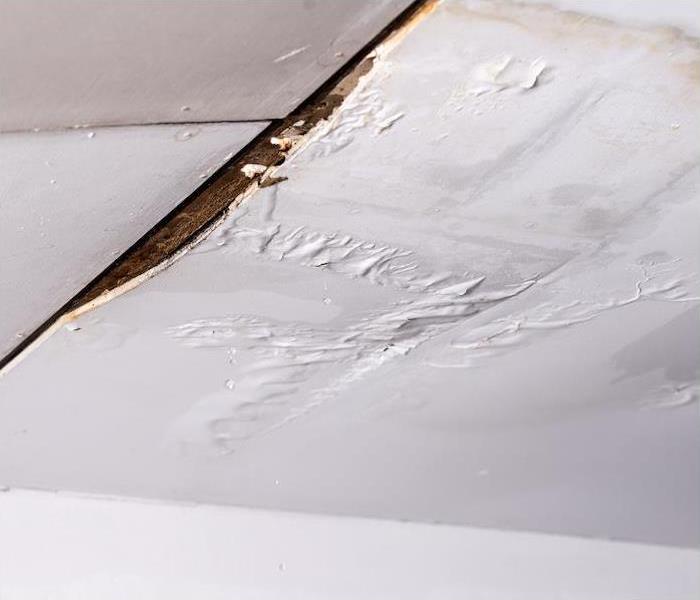How Water Gets in the Wrong Places | SERVPRO® of Jonesboro
1/10/2023 (Permalink)
Water could be seeping into your home unnoticed. In order to prevent damage down to the very foundation of your home, learn to check for signs such as musty odors, cracked paint, or stains on your walls.
Extra moisture in your home could also lead to rust on your appliances. While these signs may be subtle and hard to find, you should also watch for the most obvious sign of a water intrusion: puddles on the floor.
Water can do a lot of destruction over time, so the more you learn about how to spot, prevent and correct even small leaks, the safer you can keep your home.
Bathrooms and kitchens are two areas with a high chance of unnoticed leaks. Water fixtures with disintegrating caulk like toilets, sinks, tubs, and showers or any fixture with a water line that can develop holes are common sources.
Inspect these areas routinely when you do other cleanings, and take care of any leaks you find right away. A small leak can waste nearly a thousand gallons of water in a year, so the faster you take action the more you can mitigate the chance of damage.
If you have a refrigerator with any kind of water feature or a dishwasher, you may be at high risk for unnoticed leaks. Generally, these leaks are small and hidden but could result in serious damage to your floors that leaves you needing a lengthy and costly repair.
In order to check for an issue, unplug the appliance and pull it away from anything it is near. Look at where it was standing and behind it to check for wet spots, puddles of water, or mold growth. If you see anything unusual, call our experts for fast restoration.
Not all water damage originates indoors. Your windows and doors leave you vulnerable to slow leaks, and severe weather could create a flood that overwhelms your home in an instant.
Our area is no stranger to flooding from severe weather. Typically caused by heavy rains in the spring season, we have also had tornadoes that blew through and left streets and parking lots underwater from the deluge of rain that came with them.
Over the years, more and more areas have seen water that never flooded before as our town continues to grow and develop. Fortunately, there are ways to lower your risks and protect our community.
In order to prevent excessive moisture in your home, you will need to prepare now, and maintain those preparations year-round.
Start outside of your house by maintaining your gutter system and roof. When gutters are blocked by leaves or other debris water is forced over the sides and onto the roof, which leads to seepage through your ceiling, walls, and floors. Check your gutters often, and keep their downspouts clear so that water continually flows away from your property during even heavy rain storms.
Check the seals on your windows and doors regularly as well. If you have a decayed or loose seal, it could allow moisture in and promote mold growth and spread.
Use your property’s landscaping as another line of defense against water invasion by pitching your soil in a slope around your foundation. This and other organic material near your home not only allows water to drain downhill but also promotes absorption to prevent ponding. The more prepared you are, the easier you can rest no matter what storm may come.
If you experience water damage inside your home or business, call us, 24⁄7. We have the experience and equipment to get your property back in working order fast.





 24/7 Emergency Service
24/7 Emergency Service
